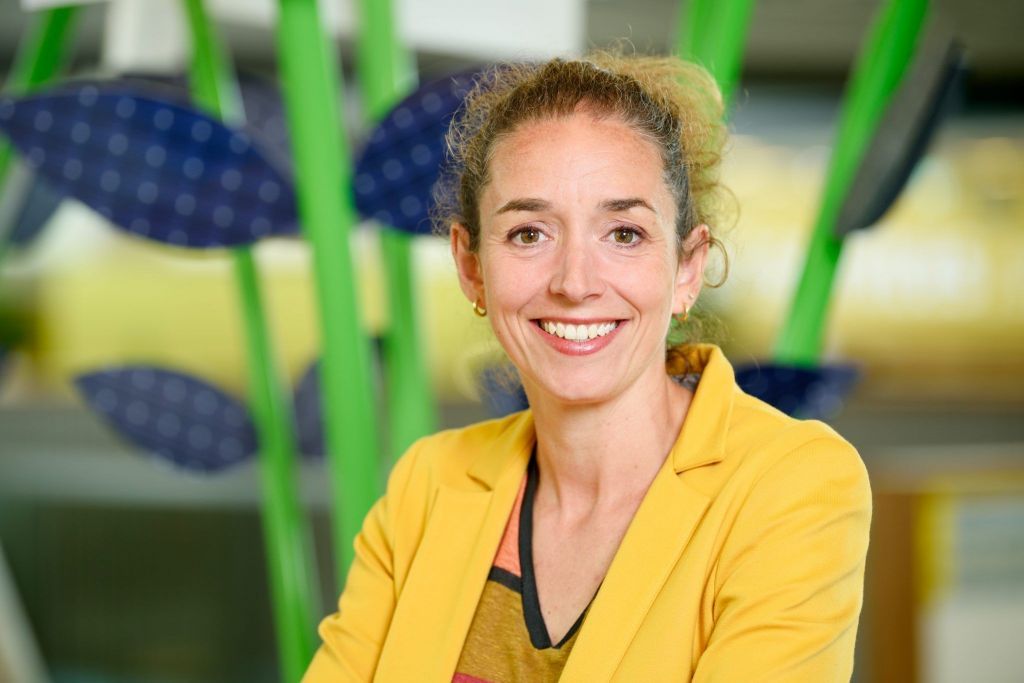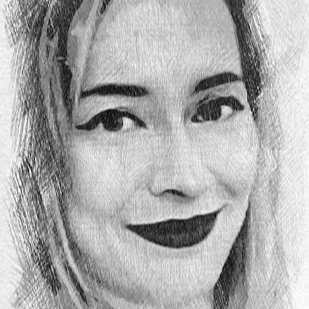
“Solving problems with technology – I think that’s what this region is great at.”
The energy system we are using today is not sustainable: people should either change their energy consumption behavior or come up with innovative solutions for creating a more sustainable energy system. The changes towards the new energy system should be made on different levels and in different ways. The director of the Strategic Area Energy in TU/e, Laetitia Ouillet, shares her thoughts on these changes.
Laetitia Ouillet believes that it is important that the government should give an outlook on what will and will not be allowed anymore in the field of energy in the nearest future. “Government has plans for CO2 reduction and for the increase in production of renewable energy. But you cannot have a lot of renewable energy and still have coal and gas as an option next to the renewable sources. It is like going on a really strict diet but still keeping chocolate on the menu.”
Laetitia Ouillet emphasizes how particularly important it is for companies to have a clear view on what would be ruled out in the area of energy. “Let’s take the example of light bulbs: the government said that the inefficient light bulbs would not be in use in a certain period of time. It seemed far away, but if you were a company you had to take this into account because in 10 or 15 years’ time you would not be able to find the replacements for the light bulbs that you had installed.”
The energy policy is aimed not only at the companies but at every individual as well. “If you have a house and every day on the news you hear that at some point we will not be using gas anymore, you might start thinking about changing your house into an energy-neutral one. But it’s a very big investment, so you want to know how serious the situation is. Am I going to be obliged to make my house energy-neutral by the government? Will I get subsidies for the changes I would be doing to the house? People hear that things might change but they don’t know for sure when things will change and whether this change will be their problem to deal with.’’
Despite the fact that people are not obliged to make their houses energy-neutral at the moment, Laetitia Ouillet took some measures to make her house and lifestyle more sustainable. “Our house was built in 1920, it was really leaking energy, so we were using a lot of gas. We replaced the whole roof construction and added a lot of insulation to it – this was quite an expensive project. We changed our gas boiler to the one which is a little more than 5% more efficient. We thought about solar panels, but our roof is too steep, which means that solar panels would only get too little solar radiation to make it a sound investment. Recently we bought a small electric car. I hate driving because I am really against it in terms of effects on environment and I think it’s a waste of time standing in traffic jams. But sometimes I need to drive to bring my children to sports, so we opted for an all-electric car.”
Talking about her work as the director of Strategic Area Energy in TU/e, Laetitia Ouillet mentions that at present most work in the area is being done on how our energy system will accommodate the tremendous amount of renewable energy which we expect to produce. For example, energy conversion and storage: “We work hard on how to turn renewable electricity or sunlight directly (without making electricity out of it) into new fuels. This fuel you can use in your car instead of electricity, which means that you will not have to have huge batteries in the cars – you can have a conversion engine working with liquid energy carriers: ethanol or methanol for example. TU/e Team FAST is working on a fuel which they call Hydrozine, which is sustainably produced formic acid. The great thing about “electrical” fuels is that you can store them. At present you can only store electricity only in a battery. If you want to store more, you need to have bigger batteries but the space that you can use for batteries is limited. So it would be really great if we could make fuels out of electricity. Producing fuels will also help green other industrial processes or heavy transport”
Carbon dioxide is what is required to produce Hydrozine. Laetitia Ouillet tells us that there are two ways of finding CO2: from a source of emissions (e.g. a big plant) or by capturing CO2 from the air. “With the carbon dioxide capture technology you will be able to get CO2 anywhere – even from the roof of your house, but it is still a difficult process and the quantities that you can get out of the air are much smaller than those you get by going to the polluting site.” The Dutch government has announced large ambitions in terms of CO2 capture and storage project, this could become a source for making new sustainable fuels if combined with renewable electricity. “The area of sustainable fuels has a huge potential,” says Laetitia Ouillet. “TU/e is trying to form the chain of expertise in this area, we are really combining the knowledge – for example, from mechanical engineering and chemical engineering. This is what distinguishes TU/e from other technical universities.”
When asked about professional plans for the nearest future, Laetitia Ouillet says: “The most important aims for me right now is to make the Dutch government realize the role and potential of those new fuels. Right now we don’t have enough renewable energy to even cover our electricity needs but in the future, if the government continues with their plans, there will be the moment one day, one year that we will need ways of storing it and using it in a smart way. My ambition in the following year is to make sure that these statements are understood by the Dutch government and by the industry.”
Laetitia Ouillet maintains connection with Eindhoven municipality. “The municipality of Eindhoven often asks for our opinions as a research institution on what will be available in the future. I’m really excited about the project of my colleague Bert Blocken – Longen van de Stad Eindhoven aimed at cleaning the air in and around parking areas. I think that’s really a pioneer solution and that is a great way for Eindhoven to make a statement in terms of where they are heading for. Solving it with technology – I think this is what this region is great at.”
Photo Bart van Overbeeke Fotografie

